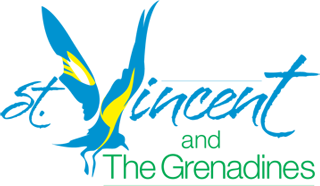Dr. George Young
The peace treaty signed in Paris in 1763 ended for a brief period the fighting between Great Britain and France in the Caribbean. British general Robert Melville (1723-1809) was appointed Governor of the southern British Caribees- Dominica, Tobago, Grenada, St. Vincent and the Grenadines-and made Grenada his headquarters. In June 1765 he visited St. Vincent and discussed with Dr. George Young, surgeon of the military hospital there, his plan for a botanic garden, primarily to provide medicinal plants for the military as well as to improve the life and economy of the colony. Dr. Young agreed with the proposal, and Melville ordered that six acres of land previously designated for military use be set aside for the garden, with Dr. Young as the superintendent. This marked the beginning of the St. Vincent Botanic Garden, which eventually expanded to twenty acres. The garden was to serve as a repository for all useful plants that could grown on St. Vincent but also, in contrast to the botanic gardens at Kew, Oxford, Cambridge, and European botanic gardens at the time, as a nursery for plants to be distributed around St. Vincent and to other islands. Melville wrote to Young in 1766:
"I need not repeat to you how desirous I am that my foundation of a botamcal plan entrusted to your skill and perseverance should prove successful, nor do I suppose it necessary that I give you fresh assurances how much my attentions and support may be relied on, for already you know my assistance shall be as great as my situation and multiplicity of public affairs will possibly permit.... The articles of plants and seeds commissioned from the Main near Honduras I shall soon hope to receive, and seeds of the best cinnamon from Guadeloupe. If you have once made tolerable progress in raising useful and curious plants, I should not despair of obtaining from Home encouragement in books, machines, instruments, etc., but till then I find I must hazard what expenses are unavoidable (as I have already done~.... Pray get as much information as possibly you can from all quarters relative to the indigenous medicines. It is against your craft but would be highly beneficial to the public and do yourself honour. And I should think for this purpose physical practitioners of the country, natives of experience, and even old Caribs and slaves who have dealt in cures might be worth taking notice of, and if at any time you should think that a secret may be got at or even an improvement for small expense, I shall readily pay for it."
In spite of Melville’s promises, the government in London did not fund the garden, and neither of Melville’s two successors as governor, Leybourne and Morris, was willing to assist in its maintenance. Nevertheless, by drawing on a variety of resources, Young was able to initiate the first program of plant introduction in the British West Indies. The War Department and the East India Company sent seeds and plants from tropical India and from British North Borneo, Sabah, and Sarawak in the East Indies, and others may have come from French horticulturists in the area. Since by 1770 Young had received only two plants of the cinnamon promised by Melville, he traveled to Guadeloupe himself to obtain ten more; in 1771 he obtained 1,200 seeds from a tree in Grenada from which he grew an additional 130 plants. Proof of Young’s success in spite of limited resources is found in a 1773
publication by John Ellis, an English botanist with interests in the Caribbean, entitled Some Additional Observations on the Method of Preserving Seeds from Foreign Parts, for the Benefit of our American Colonies, with an Account of the Garden at St. Vincent, under the Care of Dr. George Young (1773), in which Ellis states:
"Dr. Young has favored me with a catalogue of what plants are now growmg in this garden, and of the plants he has lately collected here to carry out with him; which I take the liberty to insert, for the satisfaction of the public."
Ellis listed those plants and added, "Besides these articles, there are several without names that have been raised from Chinese and other seeds." A second list indicated those plants Young would be able to get from the royal and other botanic gardens in and about London.s In the same year, London’s Society for the Encouragement of Arts, Manufacture and Commerce awarded its Gold Medal to Young, "for the Botanic Garden, for superintending its cultivation, and for relating the event of some trials and proposing further attempts."



